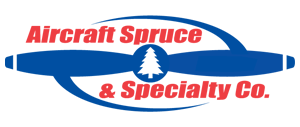THE AVIATION SUPERSTORE FOR ALL YOUR AIRCRAFT & PILOT NEEDS | 877-4-SPRUCE
McFarlane Roller (Seat Large) - MCS1704-1
$30.50/Each
Part# 05-00423-4
MFR Model# MCS1704-1
MFR Model# MCS1704-1
Overview
|
McFarlane Aviation FAA-PMA replacement seat parts were developed to assist in complying with the parts replacement requirements of A.D. 2011-10-09. This A.D. requires the periodic inspection and replacement of the seat components of the entire Cessna light aircraft fleet. Our parts are direct replacements for the wear related seat components. For convenient tools to inspect your seat rails per this AD, see the GAUGE SR1 seat rail wear gauge and TOOL110 seat roller housing gauge. McFarlane seat parts are superior to O.E.M. parts in many ways. Our rollers are fabricated from molydisulfide filled nylon for improved strength and self-lubrication. All rollers are fully machined from extruded stock for a finer surface finish and higher strength. McFarlane bushings are machined from alloy steel for longer life and greater wear resistance. Our wear washers are made from a super tough acetyl plastic and have far better wear properties and resistance to aging. McFarlane seat components will outlast the original parts. The seat related replacement parts are not serial number specific as the type of seat installed in the aircraft was optional when the aircraft was ordered from the factory. A common seat configuration is the pilot seat being "articulating" or "infinitely adjustable" while the co-pilot seat is the "standard" or "vertically adjustable style".
|
WARNING: Cancer and Reproductive Harm - www.P65Warnings.ca.gov. |
Q&A
Please note, Aircraft Spruce ®'s personnel are not certified aircraft mechanics and can only provide general support and ideas, which should not be relied upon or implemented in lieu of consulting an A&P or other qualified technician. Aircraft Spruce ® assumes no responsibility or liability for any issue or problem which may arise from any repair, modification or other work done from this knowledge base. Any product eligibility information provided here is based on general application guides and we recommend always referring to your specific aircraft parts manual, the parts manufacturer or consulting with a qualified mechanic.








 FREE Shipping
FREE Shipping





















